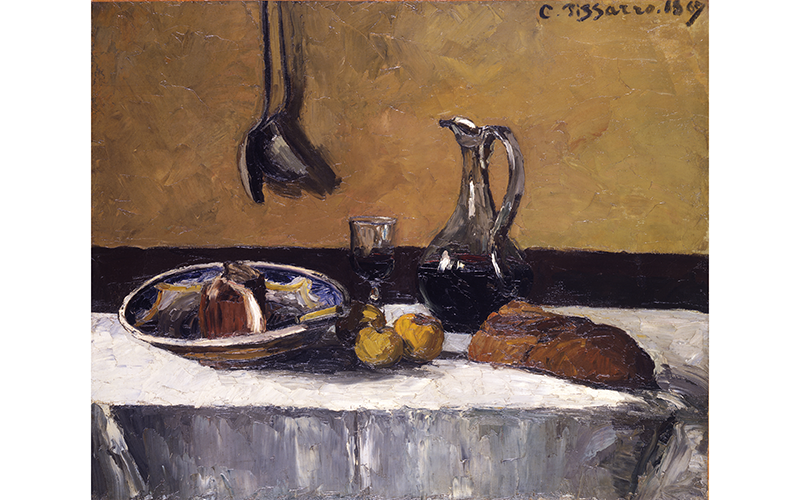- Events & Programs Home
- Calendar
- Accessibility
- Adults
-
Families & Teens
- Families & Teens Home
- 10x10 Teen Art Expo
- Art on the Rise
- Art Together: Art Making for Families with Children Ages 3–5
- Babies Sing with May Festival Minis
- Boy Scouts / Girl Scouts
- CAM Kids Day
- Family Storytime and Gallery Walk
- Family Studio: Art Making for Families with Children Ages 6–12
- Games in the Galleries
- Members-Only Baby Tours
- Public Baby Tours
- REC Reads
- Rosenthal Education Center (REC)
- Saturday Morning Art Class
- See Play Learn Kits
- Summer Camp
- Teen Fest: Zine and Comic Exchange
- RECreate
- Teachers
- Community Outreach
- Fundraisers
- Plan Your Own Event

- Events & Programs Home
- Calendar
- Accessibility
- Adults
-
Families & Teens
- Families & Teens Home
- 10x10 Teen Art Expo
- Art on the Rise
- Art Together: Art Making for Families with Children Ages 3–5
- Babies Sing with May Festival Minis
- Boy Scouts / Girl Scouts
- CAM Kids Day
- Family Storytime and Gallery Walk
- Family Studio: Art Making for Families with Children Ages 6–12
- Games in the Galleries
- Members-Only Baby Tours
- Public Baby Tours
- REC Reads
- Rosenthal Education Center (REC)
- Saturday Morning Art Class
- See Play Learn Kits
- Summer Camp
- Teen Fest: Zine and Comic Exchange
- RECreate
- Teachers
- Community Outreach
- Fundraisers
- Plan Your Own Event
Still Life
Still Life
- Home
- Plan Your Visit
- Art
-
Events & Programs
- Events & Programs Home
- Calendar
- Accessibility
- Adults
-
Families & Teens
- Families & Teens Home
- 10x10 Teen Art Expo
- Art on the Rise
- Art Together: Art Making for Families with Children Ages 3–5
- Babies Sing with May Festival Minis
- Boy Scouts / Girl Scouts
- CAM Kids Day
- Family Storytime and Gallery Walk
- Family Studio: Art Making for Families with Children Ages 6–12
- Games in the Galleries
- Members-Only Baby Tours
- Public Baby Tours
- REC Reads
- Rosenthal Education Center (REC)
- Saturday Morning Art Class
- See Play Learn Kits
- Summer Camp
- Teen Fest: Zine and Comic Exchange
- RECreate
- Teachers
- Community Outreach
- Fundraisers
- Plan Your Own Event
- Give & Join
- About
- Tickets
- Calendar
- Exhibitions
- Collections
- Blog
- Shop
- Art
- Exhibitions
- What, Me Worry? The Art and Humor of MAD Magazine
- Recall. Reframe. Respond. The Art of Paul Scott
- Rediscovered Treasures
- Special Features
- Upcoming Exhibitions
- Past Exhibitions
- Online Exhibitions
- Explore the Collection
- Provenance and Cultural Property
- Conservation
- Meet the Curators
- Digital Resources
- Art Bridges Cohort Program

Camille Pissarro (1830–1903), France, Still Life, 1867, oil on canvas, 31 7/8 x 39 ¼ in. (81 x 99.6 cm), Toledo Museum of Art; Purchased with funds from the Libbey Endowment, Gift of Edward Drummond Libbey, 1949.6
Audio Description
Still Life is a three-foot wide oil painting on canvas made in 1867 by the French artist Camille Pissarro, who lived from 1830 to 1903. It was purchased with funds from the Libbey Endowment, a Gift of Edward Drummond Libbey, for the Toledo Museum of Art, where its reference number is 1949.6.
The top half of the canvas shows an ochre-colored wall on which hang a ladle and a spoon to the left. A band of dark wainscotting runs across center of the canvas setting off a tabletop below covered with a white tablecloth. On the table, from left to right are depicted a shallow blue and yellow bowl containing a ham and a fork, three apples and a half loaf of bread. Behind at center are a glass goblet and carafe, both partially filled with red wine. The tablecloth falls partly into shadow as it hangs over the front edge of the table.
Label Copy
Still Life is a three-foot wide oil painting on canvas made in 1867 by the French artist Camille Pissarro, who lived from 1830 to 1903. It was purchased with funds from the Libbey Endowment, a Gift of Edward Drummond Libbey, for the Toledo Museum of Art, where its reference number is 1949.6.
An ardent anarchist in the political sphere, Camille Pissarro considered himself a revolutionary in the world of art. He was a founder of the Impressionist group exhibitions and the only painter to exhibit in all eight (1874–1886). Preferring to paint outside, the vast majority of Pissarro’s paintings are landscapes. This work is the earliest and largest of his few still life paintings.
Pissarro employed a restricted palette and used a painter’s knife for the application of much of the paint in this work. He intentionally and skillfully introduces subtle spatial ambiguity in his carefully staged composition. For example, note the apparent merging of the tablecloth and the rim on the left side of the bowl, as well as the confounding visual reality of the plane of the table surface, the back edge of which seems to jog up and down as it passes behind the bowl and carafe of wine.
Cincinnati, OH 45202
Toll Free: 1 (877) 472-4226
Museum Hours
Museum Shop
Terrace Café
Library
Cincinnati Art Museum is supported by the tens of thousands of people who give generously to the annual ArtsWave Campaign, the region's primary source for arts funding.

Free general admission to the Cincinnati Art Museum is made possible by a gift from the Rosenthal Family Foundation. Exhibition pricing may vary. Parking at the Cincinnati Art Museum is free.
Generous support for our extended Thursday hours is provided by Art Bridges Foundation’s Access for All program.

General operating support provided by:



